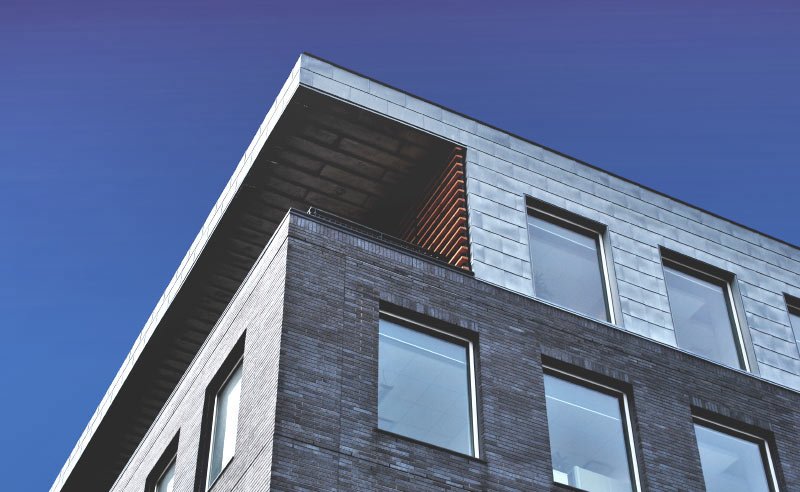The underlay
When most people think of roofs, they usually think of shingles or metal roofs. But what some may not know is that there is another layer of protection directly on the roof terrace and under the roof covering that plays a vital role in protecting your home from damage. by humidity. This is called the roof underlayment.
What is a roofing underlayment?
The roof underlayment is what sits between the shingles and the roof sheathing, or roof deck, which is typically plywood or OSB. It is installed directly to the roof deck and provides a secondary layer of protection against the elements, including rain, snow and wind.
Types of roofing underlayment
There are two main types of roofing underlayments:
Felt or synthetic?
Each product has its pros and cons, and the type you choose may depend on your geographic location, roofing materials used, roof design, budget, and what your roofing contractor may suggest.
Felt roofing underlayment
Felt roofing underlayment is the oldest underlayment on the market. It is created by saturating paper or fiberglass mat with asphalt.
Felt roofing underlayment is generally available in two types: # 15 felt and # 30 felt. Compared to # 15 Felt, # 30 Felt is generally thicker, stronger, and may be less likely to tear during installation or weather events.
Advantages
The main advantage of using a felt roofing underlayment is its cost. Felt underlayment tends to cost less than synthetic underlayment, which is why it is often the go-to solution for budget-conscious homeowners.
The inconvenients
There are several disadvantages to using a felt underlay on your roof. A downside to traditional felt roofing underlayment is that it generally cannot be left exposed for more than a few hours. Material may dry out or leach oils from heat. This would impact the ability of the felt to protect against moisture.
Other disadvantages of the felt underlayment include:
- Prone to tear in high winds and during installation.
- If exposed to moisture, the carpet can absorb water and wrinkle the felt, making it more difficult to lay the shingles flat. Therefore, shingles should be installed immediately after installing the felt underlayment to ensure optimum protection.
- The felt underlay also weighs more, which can make it more difficult to install.
- The felt underlay a slippery surface, which can sometimes make installation more difficult.
- The weight also leads to less material per roll. This means more potential seams instead of just one piece.
Synthetic roof underlayment
For better water resistance and protection from the elements, many roofers choose the synthetic underlayment. These products are generally made from durable polymers, which provide increased strength and longevity. This type of underlayment is generally resistant to moisture and, when installed correctly, provides better weather protection than felt.
Synthetic materials are not standardized, so different manufacturers may manufacture their products differently and therefore may have different levels of performance. Make sure you do your research and talk to a trusted contractor who can help you choose the right roofing materials to protect your home.
Advantages
There are four main advantages of installing synthetic roofing underlayment over felt. Compared to felt, the synthetic roof underlayment is:
- Sustainable
- Quick to install
- Safe
- Repels water
The synthetic underlay has a sturdy and durable construction with extremely high tear resistance compared to felt.
Synthetic roofing underlayment is extremely durable. It does not generally tear and is suitable for prolonged UV exposure and humidity in some cases, which is especially useful if there is a bit of time before your roof covering is installed.
Synthetic underlayment also resists start-up traffic, which is important when your roofing contractor walks over its surface during installation.
Synthetic roofing underlayment also tends to be:
- Lighter! Up to four times lighter in some cases
- Quick to install! Because there is more material per roll than felt (synthetic roofing underlayment is available in wider and longer rolls), it allows your roofers to climb fewer ladders, allowing them to save time and perhaps speed up the work. For example, a typical 2,700 square foot home may require three rolls of synthetic underlayment versus 14 rolls of No. 30 felt to cover the same area.
- Sure ! The synthetic underlay is also advantageous for the safety of the workers – This underlay, has a variety of non-slip surfaces for better accessibility on foot. It is also generally well marked with overlap guides and indicators of where fasteners should be placed, which helps improve consistency and accuracy during installation.
- Moisture resistant! Where felt products tend to absorb water, synthetic roofing underlayments are designed to repel water. This is important for homeowners concerned about moisture infiltration, especially if they plan to leave the underlayment exposed for an extended period of time.
Because it’s made of plastic, synthetic underlayment is generally resistant to mold growth, a definite advantage over felt.
The inconvenients
Compared to felt, the main disadvantage of synthetic roofing underlayment is its cost. The initial investment in better quality roofing materials is much higher than felt, however, it could save you money in the long run!
The right underlay for your roof
Whether you are embarking on a roof repair project or building a new home, there are many factors to consider when it comes to what type of underlayment to use. Synthetic roofing underlayment has many advantages over felt and can be a worthwhile investment to protect your roof and home from the risk of water and moisture infiltration.





